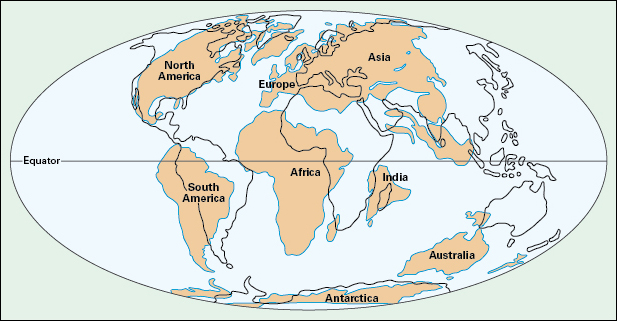Paleogene << PAY lee uh jeen >> Period was a time in Earth’s history that lasted from about 66 million to 23 million years ago. It makes up the first part of the Cenozoic Era. The years of the Paleogene Period were once considered part of the Tertiary Period. But many scientific authorities no longer acknowledge the Tertiary Period.
The Paleogene Period followed the extinction of the dinosaurs at the end of the Cretaceous Period. During the Paleogene, mammals and birds became the most common land vertebrates (animals with backbones). The continents began to approach their present arrangement. Australia separated from Antarctica. India began to collide with southern Asia, beginning the creation of the Himalaya.
The Paleogene Period consisted of three shorter periods called epochs. They are (1) the Paleocene Epoch, (2) the Eocene Epoch, and (3) the Oligocene Epoch.
The Paleocene Epoch
lasted from about 66 million to 56 million years ago. At the end of the Paleocene, Earth became much warmer. This warming may have resulted from a large release of the gas methane. Such a release would have created a powerful greenhouse effect. In the greenhouse effect, certain gases in the atmosphere trap heat from the sun, acting much like the glass roof and walls of a greenhouse (see Greenhouse effect ). The warming of Earth resulted in the extinction of some species (kinds) of corals, along with many species of plankton. Plankton is the mass of tiny water organisms that drift with the currents.

The Eocene Epoch
lasted from about 56 million to 34 million years ago. Earth was warmer during the Eocene than it is today. The first bats, camels, cats, horses, rhinoceroses, and whales appeared.
The Oligocene Epoch
lasted from about 34 million to 23 million years ago. Earth became colder during the Oligocene. Antarctica began to develop a permanent ice cap.
